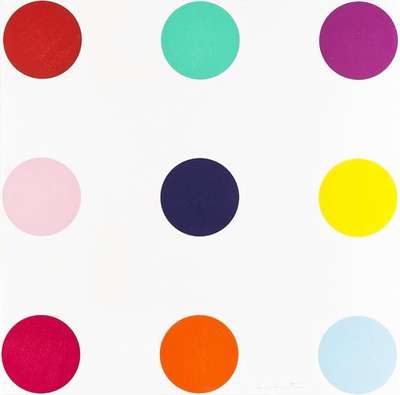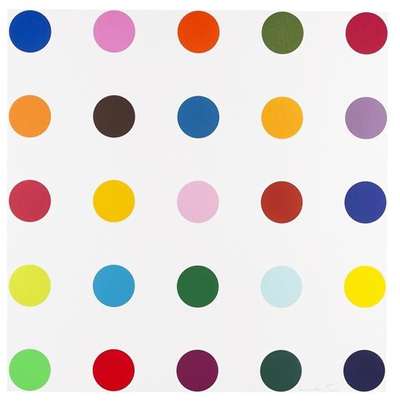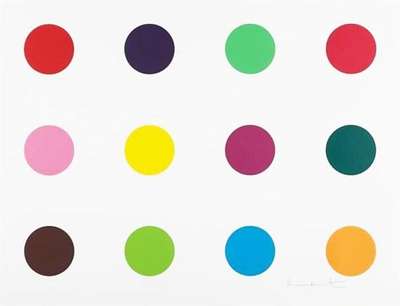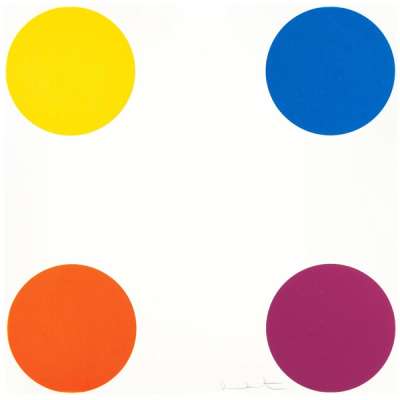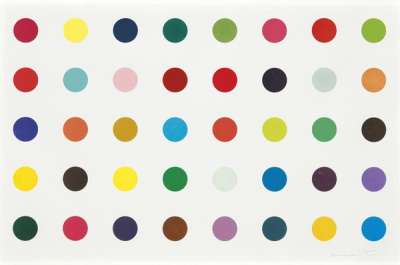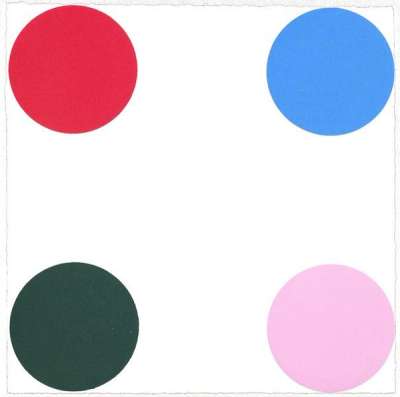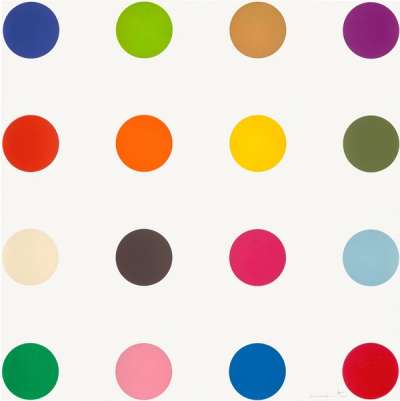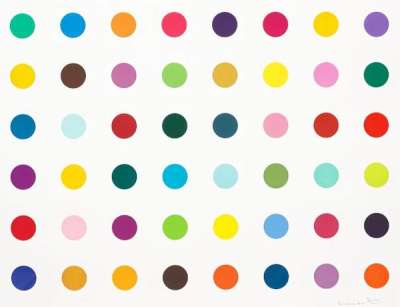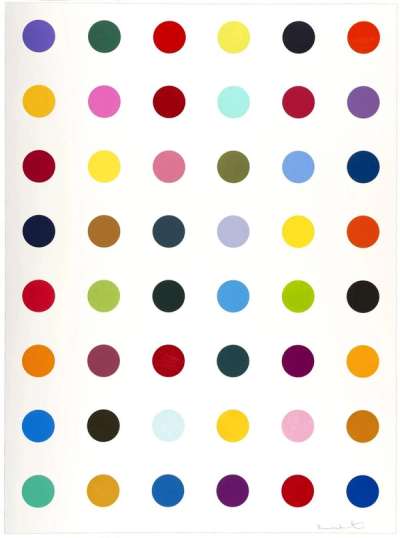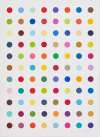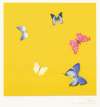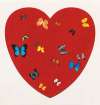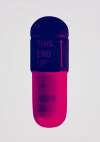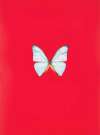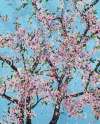12
Woodcut Spots
Quintessentially Damien Hirst, this 2010 collection of 12 prints captures the formulaic and crisp work of his spot paintings in woodcut form. Across a variety of grid scales, the spots represent the achievement of Hirst’s mission to create work ‘by a person trying to paint like a machine.’
Damien Hirst 12 Woodcut Spots For sale
12 Woodcut Spots Value (5 Years)
With £71555 in the past 12 months, Damien Hirst's 12 Woodcut Spots series is one of the most actively traded in the market. Prices have varied significantly – from £1701 to £35000 – driven by fluctuations in factors like condition, provenance, and market timing. Over the past 12 months, the average selling price was £10222, with an average annual growth rate of 0.59% across the series.
12 Woodcut Spots Market value
Auction Results
| Artwork | Auction Date | Auction House | Return to Seller | Hammer Price | Buyer Paid |
|---|---|---|---|---|---|
 Cocarboxylase Damien Hirst Signed Print | 24 Oct 2025 | Christie's New York | £13,600 | £16,000 | £21,000 |
 Norleucine Damien Hirst Signed Print | 24 Oct 2025 | Phillips London | £4,250 | £5,000 | £7,000 |
 Pridinol Damien Hirst Signed Print | 17 Jul 2025 | Christie's New York | £3,528 | £4,150 | £5,500 |
 Bromobenzotrifluoride Damien Hirst Signed Print | 18 Jun 2025 | Menzies Art Brands, Sydney | £8,925 | £10,500 | £14,500 |
 Methionine Damien Hirst Signed Print | 18 Apr 2024 | Wright | £6,375 | £7,500 | £10,000 |
 Guaiazulene Damien Hirst Signed Print | 18 Jan 2023 | Phillips London | £16,150 | £19,000 | £25,000 |
 Quinaldic Acid Damien Hirst Signed Print | 14 Sept 2022 | Phillips London | £6,375 | £7,500 | £10,000 |
 Cyclizine Damien Hirst Signed Print | 14 Sept 2022 | Phillips London | £4,675 | £5,500 | £7,500 |
Sell Your Art
with Us
with Us
Join Our Network of Collectors. Buy, Sell and Track Demand
Meaning & Analysis
12 Woodcut spots is a collection of prints that are quintessentially Damien Hirst, comprised of his signature coloured dots. The series is representative of some of Hirst’s most iconic works to his name, the spot paintings. The spot paintings that depict rows of spots in a grid-like formula, each spot a different colour, are an exploration of colour and form that is distinctly Hirstian.
As with all of the spot paintings that Hirst has produced in his career, the prints in this series are formulaic and crisp in form. The spots are each perfect circles, spaced equally apart and set against clinical white backdrops. Their clean edges and bright, flat colours indicate a lack of human touch in the production of this print. The spot paintings marked a turn in Hirst’s career where he began to employ assistants to help produce his work. The process of making the spot paintings added a factory-like approach to his artistic practice, heavily influenced by Pop artist Andy Warhol. Despite the apparent simplicity of the 12 Woodcut Spots prints, the paintings are painstaking and laborious to produce in their precision and endlessness. Hirst explained that his goal was to create work that seemed as though it was produced ‘by a person trying to paint like a machine.’
The cold repetition and sterile aesthetic of the 12 Woodcut Spots collection is reminiscent of Hirst’s early pill cabinet works such as The Void from 2000 and his prolific Pharmaceutical paintings that span across his career. Both works evoke a sense of endless sameness and directly allude to the realms of medicine and science. The titles from the 12 Woodcut Spots series are taken randomly from the chemical company Sigma-Aldrich’s catalogue ‘Biochemicals for Research and Diagnostic Reagents’ that Hirst first encountered in the early 1990s. The grid formula is integral to the endless potential that Hirst’s spot paintings hold and allow for a rational and precise exploration of colour combinations. Of his famous spot paintings, Hirst has said: “I believe all painting and art should be uplifting for the viewer. I feel it inside me. It gives me a buzz.”
